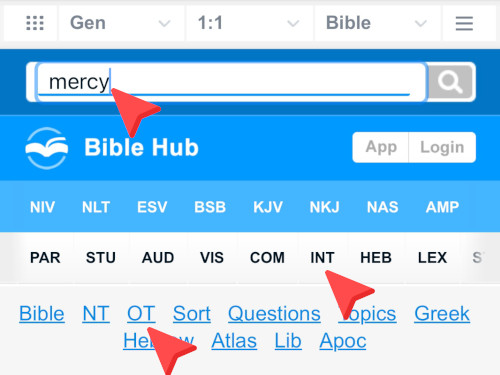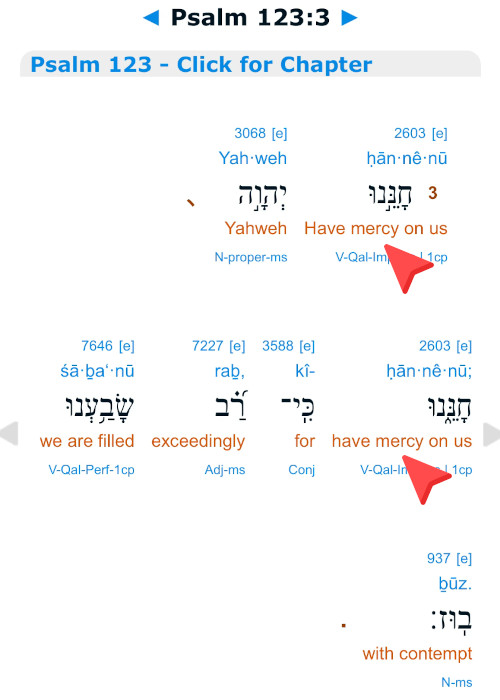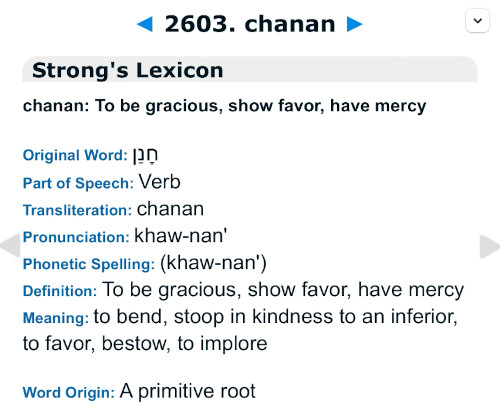How to Do a Hebrew Word StudyLesson 3: Using an Interlinear and Strong’s DictionaryIn this lesson, you’ll learn how to use free online tools to investigate Hebrew words behind English Bible translations:
We’ll use the word mercy as our example, tracing it from the English text to its original Hebrew word. Sometimes it will be ḥesed (חֶסֶד)—but not always. This process will help you begin thinking like a Bible translator. Step 1: Opening the Interlinear
 Step 2: Finding Strong’s Number
 Step 3: Opening Strong’s Dictionary
 Exercise: Try It Yourself Open the Interlinear for Psalm 123:3 on BibleHub. Look beyond the word mercy and examine some of the other English words in the passage. Pay close attention to the word translated as “filled.” You may find that its actual meaning carries more depth than the English suggests. For each word you choose, answer the following:
Key Takeaways
Next Up: Digging Deeper with a Lexicon You have learned how to trace English words back to their original Hebrew form using an interlinear Bible and Strong’s Dictionary. That’s a strong start—but it’s just the beginning. If you want to go beyond Strong’s brief definitions and begin uncovering the full meaning of a Hebrew word, you need to explore its root—and all the related words that grow from it. Most lexicons require some knowledge of Hebrew to do that, but in this next lesson, I’ll show you how to bypass that hurdle using a lexicon I created specifically for students like you. No Hebrew required. Let’s dive into the Hebrew word behind believed in Genesis 15:6 and uncover how a concept like faith is grounded in something far more concrete than we often imagine.  |
|
Copyright © 2025 |


